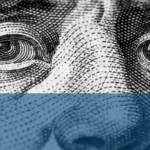The US Presidential campaign is in full swing, and it’s more dynamic than ever. There are lots of statements and accusations flying around, and a lot of them are easy to write off as “election fluff”. But, some require a closer look.
Count on Trump to Heat Things Up
Last week, Republican presidential candidate Donald Trump once again showed his interest to infringe on the Federal Reserve’s independence should he make his way back to the Oval Office.
“I feel the president should have at least (a) say in there” on Fed decisions, the former president told reporters at his Mar-a-Lago residence in Florida.
“It’s Not An Original Story…”
It’s not the first time we hear about it. Earlier this year, reports emerged stating that team Trump had drafted proposals that would attempt to erode the Fed’s independence if he wins. Reported by the Wall Street Journal at the time, the story did not gain the exposure it deserved as the Trump campaign was quick to distance itself from it. But, last week the man said it himself: If he becomes president, Trump should be consulted on interest rate decisions, and Fed banking regulation proposals should be subject to White House review.
To be fair, this is not an original story as presidents were tempted to meddle into Fed decisions earlier. Think Richard Nixon in the early 1970s attempting to dabble in Fed policy making.
As we know, the strength of US’ monetary and financial policy has always been in Fed’s independence. Rain or shine, Democrat or Republican government, it had (mostly) been a given that the Fed retains its independence. So, how could Trump control it?
What is Fed and how could Trump control it?
Created by Congress 1913, the Federal Reserve System comprises the Washington-based Federal Reserve Board; 12 regional Federal Reserve banks dotted across the country; and the interest-rate-setting Federal Open Market Committee.
The Fed board’s seven members include the chair, two vice chairs and four other governors. All are presidential appointees subject to Senate confirmation. So, the easiest way to exert control is through the appointment process. The Fed chief is nominated by the president, subject to Senate confirmation, and Trump could attempt to install a Fed chief willing to elevate allegiance to him over the Fed’s long-standing independence.
Trump has a long history of knocking heads with current Fed Chair Jerome Powell, whom he installed as central bank chief in 2018. It was a relationship Trump revisited in his remarks on Thursday, saying “I fought him very hard.”
Powell managed to weather Trump’s verbal assaults and has spent considerable time as chair building relationships with top Republicans and Democrats in Congress that have fortified his standing.
His second term as chair – Powell was reappointed by President Joe Biden – doesn’t expire until May 2026, and Trump told Bloomberg this summer that he would not try to oust Powell before his term ends – something Trump talked repeatedly about doing during his time in the White House. That would leave a window of a bit more than two years for Trump to exert sway over a new Fed chief of his choosing, assuming such a compliant choice wins Senate confirmation.
The next president will also have a chance to choose the two Fed vice chairs – one for monetary policy and one for banking supervision. With the stakes of this election being already high, the ambition to influence Fed’s decisions coming from a GOP candidate puts extra pressure and increases potential chances of volatility for the global economy and forex market.










